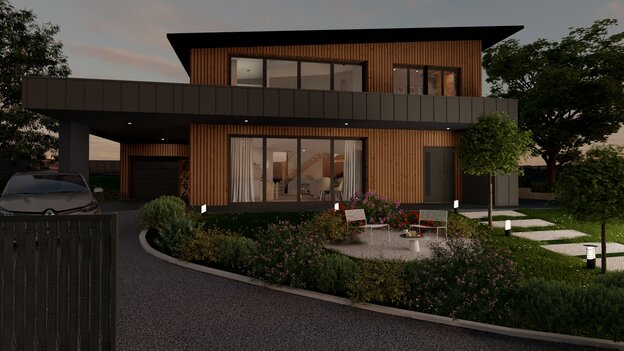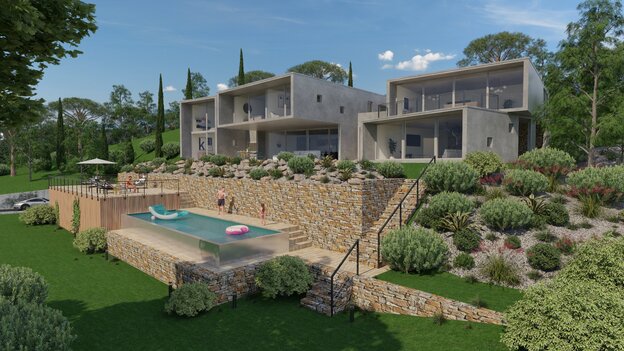Pricing your landscape design services can be a challenging task. But striking the right balance between competitive rates and fair compensation is essential for success — it helps ensure you can land enough clients while maximizing your earnings. So whether you’re a contractor, designer, remodeler, or builder, you need to understand how to charge for your landscape designs.
In this 10-minute read, we’ll explore some pro tips that’ll help you charge the right amount for your landscape design services. Let’s start with a popular method – the hourly rate.
How To Calculate Your Hourly Rate
Setting your hourly rate involves several crucial considerations:
Experience: Your years of experience and level of expertise should influence your rate. Clients are often willing to pay more for seasoned professionals.
Market Research: Conduct thorough market research to understand what competitors charge for similar services. So be sure to research local industry standards.
Overhead Costs: Don’t underestimate your business expenses like tools, software, office space, insurance, and more. Factoring these costs into your hourly rate ensures you cover your expenses and make a profit.
Desired Income: Determine your target annual income. This figure serves as a starting point for your rate calculations.
Billable vs. Non-Billable Hours: Remember that not all your hours will be billable. Administrative tasks, client meetings, and marketing efforts are essential but usually non-billable. Consider this when calculating your hourly rate.
By carefully considering these factors, you can set a competitive hourly rate that reflects your skills, covers your expenses, and ensures profitability.
When To Offer A Flat Fee
Flat fees provide clients with predictability and can be an attractive option for many projects. Consider offering flat fees in the following scenarios:
Small Projects: For simple garden designs or minor updates, a flat fee simplifies the pricing process for both you and the client.
Clearly Defined Scope: When you have a clear understanding of the project’s scope, offering a flat fee can streamline negotiations and make it easier for clients to budget.
Client Preference: Some clients prefer the certainty of a fixed cost even if it ends up being slightly more expensive.
However, just be sure your flat fee accurately reflects the complexity and effort required for the project. Set your flat fee too low and you’ll end up losing money and causing yourself a lot of frustration.

Pros & Cons of Percent of Budget Method
Charging a percentage of the project’s budget is another viable approach. Here are the advantages and disadvantages to consider:
Pros:
- Incentive for Efficiency: This method incentivizes you to complete projects within budget, ensuring you’re motivated to control costs.
- Higher Earnings Potential: As project budgets increase, your earnings grow proportionally, allowing you to earn more on larger projects.
Cons:
- Budget Uncertainty: You may not have a clear understanding of the final project budget until late in the design process, which can pose challenges.
- Risk of Disputes: Clients might question your percentage fee, especially if the project experiences cost overruns.
*PRO TIP: Don’t forget to add your overhead costs to your markup percentage. Calculate the total cost of your annual overhead expenses and divide it by your annual revenue. Example: If your annual overhead is $100,000 and your annual revenue is $1,000,000, then your annual overhead percentage is 10%.
Here’s the formula for calculating your markup on a job if you want your profit to be 10% of the budget.
- Markup % = (Overhead % + Profit %) / (1 – Overhead % – Profit %)
- Example: (0.1 + 0.1) / (1 – 0.1 – 0.1) = 25% total markup on each job
- Sample Bid: $50,000 Project Costs x 1.25 = $62,500 Bid Price
Consider using this method primarily for larger projects with well-defined budgets. Be sure to maintain open communication with your clients throughout the project to mitigate potential disputes.
Charging by Acre or Square Footage
For landscape designs that cover extensive areas, charging by acre or square footage can be a practical approach. This method allows you to scale your rates based on the project’s size.
However, it’s important to establish a reasonable price per unit area that aligns with your local market. Remember that these rates can vary significantly depending on geographic location and project complexity.
Decide if You Have a Minimum Project Size & What That Is
Determine whether your business will accept small projects or if you have a minimum project size requirement. Having a minimum project size ensures that your efforts are adequately compensated. It also helps you focus your resources on more substantial opportunities which helps maximize your profitability. So consider factors such as the time and effort required for smaller projects when setting your minimum size threshold.
Mistakes to Avoid When Calculating Your Landscape Design Rates
To ensure the long-term success of your landscape design business, steer clear of these common pricing pitfalls:
Underpricing: Charging too little can undermine your business’s sustainability. It’s essential to recognize the value of your expertise and the quality of your work.
Overpricing: On the flip side, overcharging may deter potential clients and lead to a lack of projects. So try to find a competitive balance between your rates and the quality of your services.
Ignoring Market Trends: Stay up-to-date with industry pricing trends. Failing to adapt to market changes can affect your competitiveness.
Neglecting Costs: Ensure you account for all your business expenses accurately. Neglecting to include overhead costs can lead to financial difficulties.
Lack of Clear Contracts: Document your pricing terms clearly in contracts to prevent disputes down the road. A transparent agreement helps maintain a positive client relationship.

Find the Right Landscape Design Strategy for You
Determining the right pricing strategy for your landscape design services is a critical component of your business’s success. So whether you go with hourly rates, flat fees, percentage-based fees or unit-based pricing, don’t forget to consider your experience, market trends and project complexity.
FINAL PRO TIP – An easy way to save loads of time and money during your design process is by choosing the right design software. For a streamlined approach to landscape design, go with Contemporary Style Design. It empowers you to…
- create stunning 3D designs
- accurately estimate costs with the CostCertified integration
- and save time with its intelligent toolset
Try Contemporary Style Design for FREE today!




